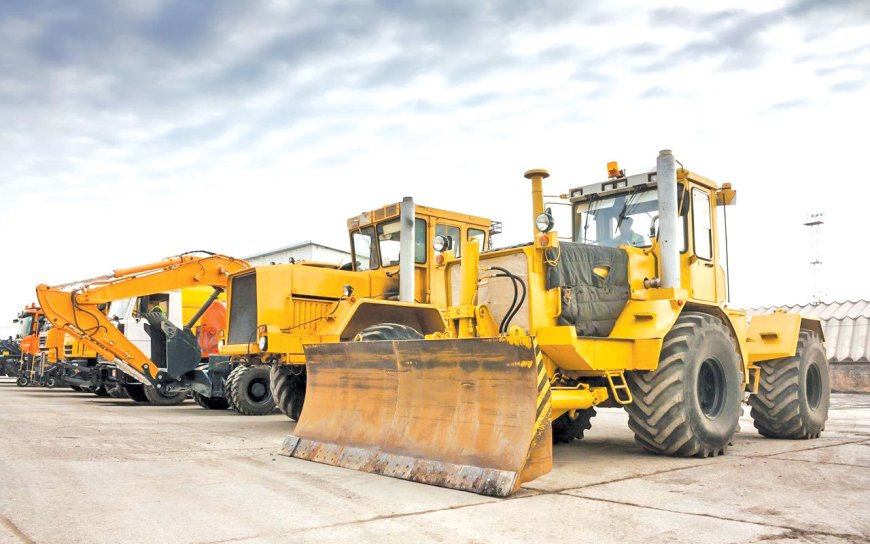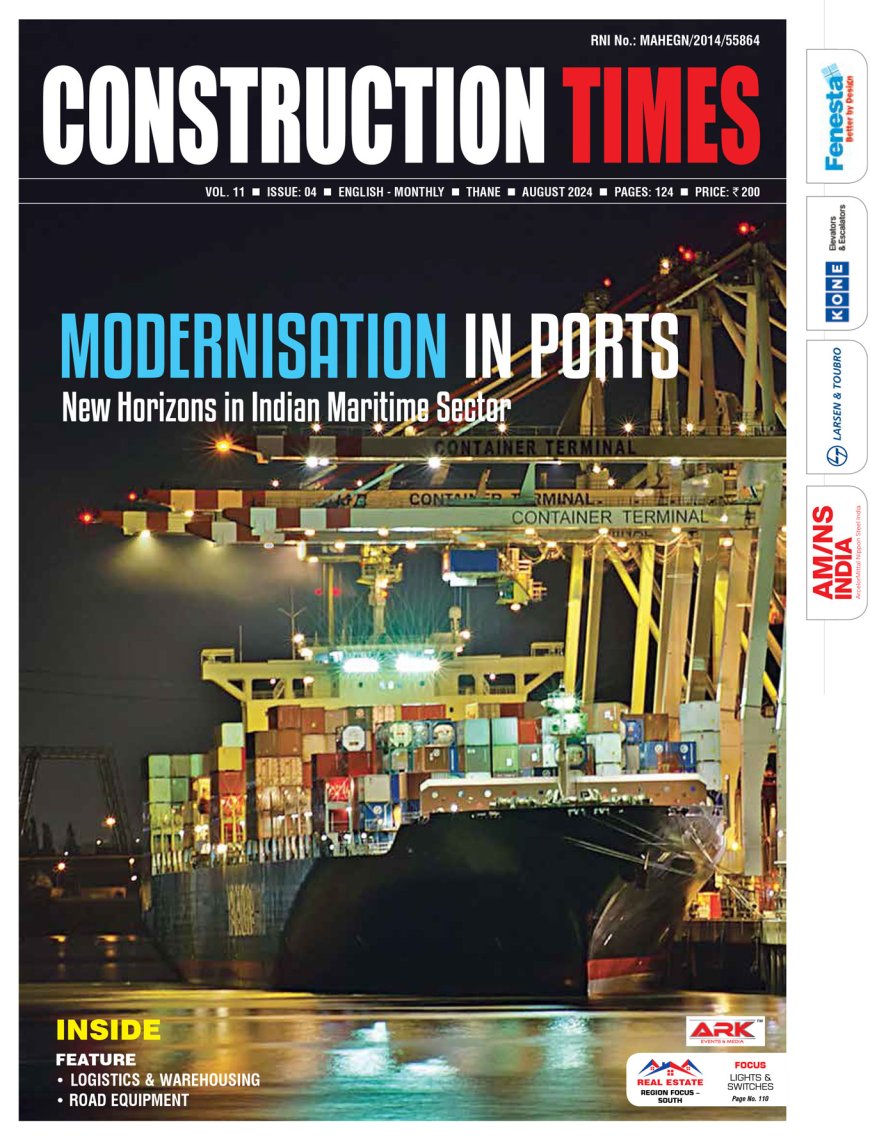Regaining Momentum

India is still in need of more highways and road network to meet the ever-growing demand in the coming years. Construction Times finds out the new developments in roads and highways and the demand trend for road equipment.
Roads and highways continue to be the major infrastructure segment in India with a lot of projects are under construction and many in the pipeline. While the Bharatmala programme is picking up with the government and NHAI aiming more execution in the years to come, there are many state highways and rural roads are under construction. All these are providing immense opportunities for road equipment players for their wider range of equipment in the application of smaller and bigger road projects.
Demand to pick up
 Road construction drives 35-45% of the construction equipment sales in India, according to an ICRA report. However, the road awards declined significantly by 84% to 99 km during Q1 FY2025, compared to 611 km in Q1 FY2024 because of the Model Code of Conduct, which was in place, according to Vinay Kumar G, Vice President & Sector Head - Corporate Ratings, ICRA Limited. Going forward, improvement in awarding is contingent on the receipt of the Cabinet Committee approval on cost escalations pertaining to the Bharatmala Pariyojana. ICRA expects the awarding to grow by 17-20% to 10,000–10,500 km in FY2025 from 8,581 km in FY2024.
Road construction drives 35-45% of the construction equipment sales in India, according to an ICRA report. However, the road awards declined significantly by 84% to 99 km during Q1 FY2025, compared to 611 km in Q1 FY2024 because of the Model Code of Conduct, which was in place, according to Vinay Kumar G, Vice President & Sector Head - Corporate Ratings, ICRA Limited. Going forward, improvement in awarding is contingent on the receipt of the Cabinet Committee approval on cost escalations pertaining to the Bharatmala Pariyojana. ICRA expects the awarding to grow by 17-20% to 10,000–10,500 km in FY2025 from 8,581 km in FY2024.
The decline in execution was relatively lower at 14%, amounting to 1,934 km during Q1 FY2025 compared to 2,250 km during Q1 FY2024. ICRA expects the road execution to grow by 5-8% to 12,500-13,000 km after recording a robust expansion of ~20% in FY2024. The pace of execution in this fiscal will be supported by a healthy pipeline of under-implementation projects, sustained healthy capital outlay by the Government of India and focus on completion of projects by the Ministry of Road Transport and Highways (MoRTH).

According to Dimitrov Krishnan, Managing Director, Volvo CE India, the government has announced its allocation for expanding roadways, infrastructure and urban development. There are also several important large-scale projects on expressways, metro links, trans-harbour links and others that are underway, which require specialized, high-capacity equipment to ensure efficient and timely completion. “Volvo CE plays a pivotal role in contributing to the development of the country’s Viksit Bharat vision. We have contributed to some of the prestigious projects such as Delhi-Mumbai Expressway; Mumbai-Nagpur Samruddhi Expressway, many Bharatmala projects and several other large-scale projects,” says Krishnan.
Loaded with technologies
Road construction equipment have been transforming drastically, loaded with innovative features and technologies. “As a leader in the construction equipment space, we offer a comprehensive range of robust, efficient machines with advanced features that are tailor-made to suit the needs of Indian customers, like our recently launched 20-tonne EC210 excavator and soil compactor SD110 Drum drive, which is a game changer for deployment requirements in the country,” states Krishnan.

CASE Construction contributes significantly to this sector by providing advanced machinery designed for the rigorous demands of large infrastructure projects. Shalabh Chaturvedi, Managing Director, CASE Construction Equipment – India & SAARC region, elaborates, “Our equipment is built for superior performance, durability, and reliability, integrating cutting-edge technology such as telematics to enhance operational efficiency and reduce downtime through real-time monitoring and diagnostics.”
Volvo CE integrates cutting-edge technologies into its road equipment portfolio to enhance construction efficiency and sustainability. Krishnan adds, “Our soil compactors feature continuously variable frequency adjustments to cater to various soil types, optimizing compaction efficiency. Our double-drum rollers boast auto-reversing eccentrics for bidirectional compaction, significantly improving productivity, density, and fuel efficiency. Our pneumatic-tyred rollers lead the market in finishing and sealing asphalt road surfaces, ensuring superior quality and durability.”
“From state-of-the-art telematics to automation, the industry is evolving rapidly with new innovations. Additionally, leading players are adopting the latest engines compliant to BS (CEV) V emission standards, underscoring a commitment to sustainability,” Chaturvedi highlights.

Revival on cards
After a short period of lull in project execution in roads and highways, largely due to the general elections and Model Code of Conduct, the sector is regaining momentum. Krishnan is confident on the road equipment sector’s revival in the coming years. According to him, the road equipment market in India holds immense potential, driven by increasing infrastructure investments and the adoption of advanced technologies. “We aim to expand our electric and hybrid product offerings, strengthen our service capabilities, and forge strategic partnerships to capitalize on growth opportunities,” he adds.
“Recent market reports highlight robust prospects driven by major projects, including the construction of roads, highways, expressways airports, and extensive metro, affordable housing and railway expansions,” Chaturvedi points out.
In a recent development, the Union Cabinet has approved eight important National High-Speed Road Corridor Projects of 936 km length at a total capital cost of Rs 50,655 crore to improve logistics efficiency, reduce congestion and enhance connectivity across the country. The 88-km Agra-Gwalior national high-speed corridor project will be developed on Build-Operate-Transfer (BOT) mode as a fully access-controlled 6-lane corridor at a total capital cost of Rs 4,613 crore. The 231-km 4-lane access-controlled high-speed corridor between Kharagpur and Moregram will be developed in Hybrid Annuity Mode (HAM) at a total capital cost of Rs 10,247 crore. The 214-km 6-lane Tharad-Deesa-Mehsana-Ahmedabad national high-speed corridor will be developed in Build-Operate-Transfer (BOT) mode at a total capital cost of Rs 10,534 crore. The 137-km 4-lane access-controlled Pathalgaon-Gumla section of Raipur-Ranchi corridor will be developed in Hybrid Annuity Mode (HAM) at a total capital cost of Rs 4,473 crore to complete the whole corridor. The 47-km 6-lane Access-Controlled section of Kanpur Ring Road will be developed in Engineering, Procurement and Construction Mode (EPC) at a total capital cost of Rs 3,298 crore. This section will complete the 6-lane National Highway Ring around Kanpur. 121-km Guwahati Ring Road will be developed in Build Operate Toll (BOT) mode at a total capital cost of Rs 5,729 crore in three sections viz., 4-lane Access-Controlled Northern Guwahati bypass (56 km), widening of the existing 4-lane bypass on NH 27 to 6 lanes (8 km), and improvement of existing bypass on NH 27 (58 km). A 30-km 8-lane elevated National High-Speed Corridor from Nashik Phata to Khed near Pune will be developed on Build-Operate-Transfer (BOT) at a total capital cost of Rs 7,827 crore.
All these upcoming projects and the projects under execution are expected to create more demand for road construction equipment with advanced features.















